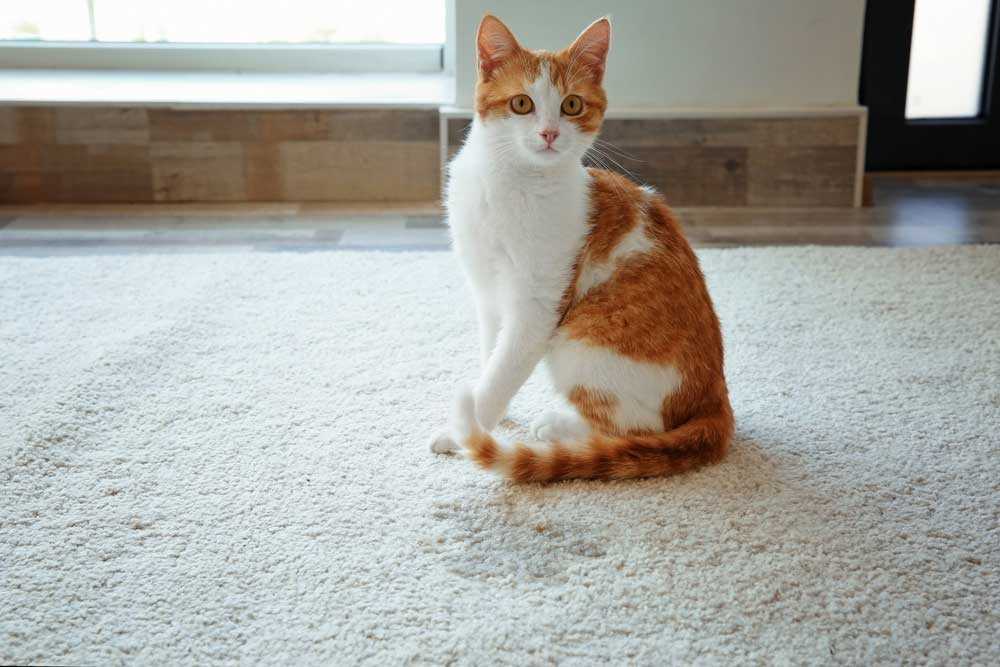



Mix a solution of equal parts water and white vinegar in a spray bottle. This blend effectively neutralizes odors and helps break down any remaining stains.
Apply the mixture generously to the affected area, allowing it to sit for 10-15 minutes. This step ensures that the solution penetrates deep into the fibers, targeting the source of the smell.
Afterward, blot the area with a clean cloth or paper towel to absorb the liquid. Avoid rubbing, as this can spread the issue further. Repeat the process if necessary for stubborn spots.
For final touch, sprinkle baking soda over the damp area. This natural deodorizer will absorb any lingering scent. Leave it for a few hours or overnight, then vacuum the area thoroughly.
Identify the Source and Extent of the Stain

First, locate the exact spot. Using a black light can reveal hidden marks that aren’t visible in regular lighting. This helps to pinpoint the origin of the issue.
Next, assess the size of the area affected. Check if it’s just the surface or if it has penetrated deeper into the fibers and padding. Press down on the area with a cloth to see if it absorbs moisture, indicating a more extensive problem.
Check Surrounding Areas
Investigate nearby spots as well. Sometimes, one incident can lead to multiple areas being impacted. It’s important to scrutinize the entire vicinity to ensure nothing goes unnoticed.
Smell Test
A quick sniff can also help determine if there are additional locations that need attention. The scent will often linger, guiding to other potential trouble spots that require treatment.
Gather Necessary Cleaning Supplies

Before tackling these unfortunate mishaps, make sure to collect the right tools. A clean cloth or paper towels will help absorb moisture quickly. An enzymatic cleaner is a must; it breaks down the compounds that cause odors. A spray bottle allows for easy application of the cleaning solution.
Consider having water and a mild dish soap handy for initial rinsing. A vacuum cleaner with a hose attachment can assist in removing any remaining debris. If available, a black light can help pinpoint hidden spots that need attention.
Extra Tools
Rubber gloves protect your paws while handling the mess. A bucket will hold any soiled materials. If the stain is stubborn, a soft-bristled brush can help scrub without damaging the fibers. Keep a separate container for disposing of used materials to maintain cleanliness.
Apply a cleaning solution to the affected area
After identifying the stain and gathering supplies, it’s time to use a suitable cleaning solution. Choose a product specifically designed for eliminating odors and stains from fabrics. Look for enzymatic cleaners; they effectively break down the compounds that cause unpleasant smells.
To apply the solution:
- Test the cleaner on a small, inconspicuous area of the carpet to ensure it doesn’t cause discoloration.
- Spray or pour the cleaner generously over the stain, saturating the affected area.
- Gently blot the area with a clean cloth or paper towel, avoiding rubbing, which can spread the stain.
Let the cleaning solution sit for the time recommended on the product label. This allows the enzymes to work effectively. Afterward, blot up any excess liquid with a clean cloth.
For those who enjoy photography, check out the best canon digital camera below 15000 for capturing your furry friends in action!
Rinse the area with water and blot again to remove any remaining cleaner. This step is crucial to avoid residue buildup that could attract dirt.
Blot the stain instead of rubbing it
When dealing with an unwanted mark, the best approach is to gently blot the area. Press a clean cloth or paper towel against the spot, allowing it to absorb the liquid. Avoid rubbing, as this can push the moisture deeper into the fibers and worsen the situation.
Use a blotting technique by applying pressure evenly, lifting the cloth occasionally to check for transfer. Rotate or switch cloths to prevent spreading the liquid. Aim for a methodical approach, working from the outer edges of the stain toward the center.
Once the initial blotting has absorbed the excess liquid, follow up with an appropriate solution to break down any lingering odors. However, the key is to continue the blotting method throughout the entire cleaning process for optimal results.
| Step | Action |
|---|---|
| 1 | Gently press a clean cloth against the stain. |
| 2 | Lift the cloth to check for absorption. |
| 3 | Rotate the cloth to a clean section as needed. |
| 4 | Apply a suitable cleaning solution after initial blotting. |
This method ensures that the issue is addressed without causing further damage to the surface beneath. Remember, patience is essential for complete removal.
Neutralize lingering odors after cleaning
After tackling the stain, it’s time to eliminate any remaining scents. Baking soda is a fantastic option. Sprinkle a generous amount over the cleaned area and allow it to sit for several hours or overnight. This will absorb any lingering odors effectively.
Vinegar is another ally. Mix equal parts water and white vinegar in a spray bottle. Lightly mist the area, then let it air dry. The vinegar smell will dissipate, taking unwanted scents with it.
Utilize essential oils
Essential oils can also help freshen up the space. Add a few drops of lavender or lemon oil to a diffuser to create a pleasant aroma. This can mask any remaining odors while providing a calming environment.
Regular airing out

Opening windows and allowing fresh air to circulate can be beneficial too. Fresh air helps remove any persistent smells, promoting a cleaner atmosphere. Consider this step as part of a regular cleaning routine to maintain a fresh home.
Prevent Future Accidents with Training Tips
Establish a designated area for litter box use. Consistency helps in forming habits. Place the litter box in a quiet, accessible spot that feels safe. Regularly clean it to maintain appeal.
Positive reinforcement works wonders. Reward good behavior with treats or praise. Associating the litter box with positive experiences encourages repeat visits.
Monitor Behavior
Watch for signs of distress or avoidance around the litter box. If there are hesitations or accidents elsewhere, it might indicate discomfort or health issues. Consult a vet if necessary.
Explore Alternatives
Experiment with different types of litter or boxes. Cats have preferences, and finding the right combination can make a significant difference. Consider options like covered boxes or various litter materials.
For additional support, check out best cbd treats for cats that might help in calming anxious behaviors.








